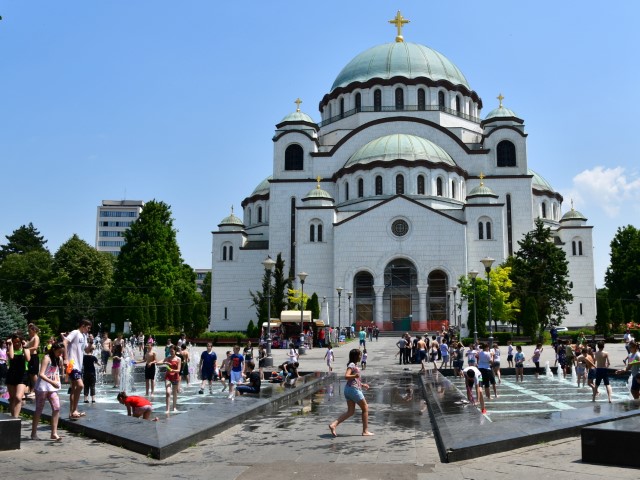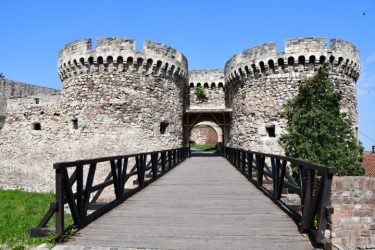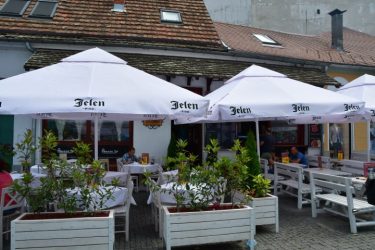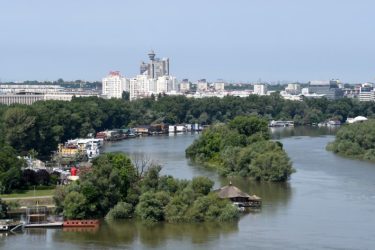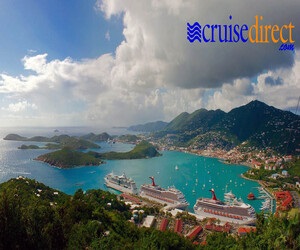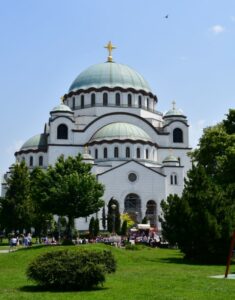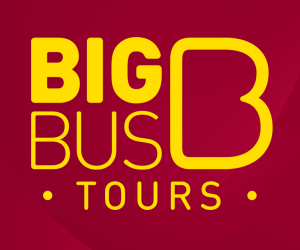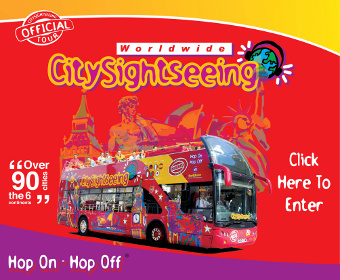Serbia’s capital, Belgrade, is a fascinating city that provides a rare fusion of tradition, modernity, and culture. One of the most popular tourist sites in the Balkans, it has a turbulent past that is reflected in the variety of its architectural styles and the abundance of cultural landmarks. The National Museum, the Museum of Yugoslav History, and the Nikola Tesla Museum, which honours the life and work of the well-known inventor, are just a few of the fascinating institutions in Belgrade that visitors can explore.
Belgrade is renowned for its thriving nightlife and culinary scene, which includes a wide variety of top-notch eateries, cafes, and pubs serving both regional and international food. Both the vibrant alleys of the Savamala neighbourhood and the hipster-friendly Skadarlija quarter are well-known for their food and drink options.
With numerous parks and the Ada Ciganlija island offering plenty of options for hiking, biking, and water sports, Belgrade has a lot to offer people looking for outdoor activities. The Belgrade Fortress, the Temple of Saint Sava, and Kalemegdan Park are a few other well-known sites in the city.
In conclusion, Belgrade is a must-see location for anybody who are interested in history, culture, and modern urban life. Every traveler can find something to enjoy there because to the ancient and new elements that the city has to offer. In this article, we will let you know what we think the best things for you to do and see when you visit Belgrade.
Visit the Kalemegdan Fortress
Anyone interested in history or architecture must visit the Kalemegdan Fortress, which is situated in Belgrade, Serbia. The stronghold was initially constructed in the second century AD, and over the years, it has undergone numerous expansions and renovations by different kings and dynasties. It now functions as a well-liked tourist destination and a tranquil haven in the middle of the metropolis.
The Upper Town and the Lower Town, which give distinct perspectives of the surrounding area, are just two of the sections of the Kalemegdan Fortress that visitors can tour. There are various museums in the Upper Town, including the Military Museum, which has a magnificent collection of weaponry and other relics from Serbia’s earlier conflicts.
The breath taking views of the Sava and Danube rivers’ confluence, as well as the city of Belgrade itself, are among the attractions of a trip to Kalemegdan Fortress. Visitors can enjoy a picnic on the grassy hills while taking in the stunning surroundings or take a leisurely stroll through the park.
The Kalemegdan Fortress is an interesting and enjoyable place to visit if you want to learn about Serbia’s long history and take in the spectacular views of the city.
Nightlife in Belgrade
Serbia’s capital, Belgrade, is well known for its exciting nightlife, which draws both locals and visitors. The city is home to a huge selection of bars, clubs, and restaurants that may accommodate various tastes and price ranges.
Skadarlija, a pedestrian street in Belgrade that is packed with quaint eateries and cafes, is one of the most well-liked places for nightlife. Here, guests may take in live musical and dance acts while savouring regional wine and delectable Serbian fare.
The Savamala neighbourhood has a range of options, including subterranean clubs and rooftop pubs, for those seeking a more club-focused experience. The region is especially well-liked by the younger crowd and has a vibrant, upbeat ambiance.
In addition, Belgrade is well-known for its summertime boat parties that take place on the Sava and Danube rivers. These events offer a wonderful opportunity to dance the night away while taking in the stunning backdrop of the city.
Overall, Belgrade’s nightlife is vibrant and energetic, offering something for everyone. Belgrade has everything you need, whether you are looking for a leisurely evening with friends or a late-night party.
Take a Cruise on the Danube
A Belgrade Danube River cruise is a once-in-a-lifetime opportunity that provides stunning views of the city’s landmarks and surrounding landscape. The Danube, which flows through ten nations including Serbia, is the second-longest river in Europe. It has been an important commerce route since ancient times and is the city’s lifeblood.
The tour departs from the riverfront in Belgrade and travels through the city’s centre, passing by some of its most recognisable structures, including the Kalemegdan Fortress, the Church of Saint Sava, and the Ada Bridge. You can sip on a cool beverage while travelling and admiring the breath taking views of the city skyline and its surrounds.
When the sun sets in Belgrade, the Danube River cruise is especially magnificent because the sky turns a stunning hue of orange and pink. Live music enhances the experience, which makes it ideal for a romantic vacation or a fun activity for friends and family.
Overall, taking a Danube River cruise in Belgrade is a great opportunity to unwind and learn more about the charm and history of the city while taking in the beautiful landscape of the river.
If you would like to book a cruise of the Danube, click here or on the Cruise Direct image below to select from one of our preferred suppliers.
Visit the St. Sava Church in Belgrade
One of the most impressive and recognizable landmarks in Belgrade is the St. Sava Church, which is situated in the city’s center. With a capacity of more than 10,000 people, it is the biggest Orthodox Church in Serbia and one of the biggest churches in the entire globe.
The church was created as a memorial to the Serbian Orthodox Church’s founder, St. Sava, and is named in his honour. The communist regime and World War II prevented it from finishing the work it had started in 1935. The church is a relatively recent addition to the city’s skyline as it was only ultimately finished in 2004.
With a central dome and four side domes, the St. Sava Church’s architecture blends traditional Serbian and Byzantine traditions. Beautiful frescoes, mosaics, and marble are used to embellish the church’s interior, which imparts a quiet and peaceful feeling.
The main nave and the crypt, which contains a collection of religious artefacts and relics, are open for visitors to examine at St. Sava Church. Regular services and events, such as choir concerts and liturgical festivals, are also held at the church.
Overall, anyone who is interested in religion, architecture, or history should visit St. Sava Church. It is a great masterpiece of Serbian culture and a representation of Belgrade’s character because of its magnificent architecture and stunning size.
If you would like to book a tour of St. Sava Church in Belgrade, click here or on the Get Your Guide image below to select from one of our preferred suppliers.
Visit the Nikola Tesla Museum
Anyone interested in science and technology should visit the Nikola Tesla Museum in Belgrade, Serbia. One of the most significant scientists and inventors of the modern period, Nikola Tesla, is honoured in the museum via his life and work.
Over 160,000 original documents, including Tesla’s personal items, photos, and scientific apparatus, may be found in the museum’s collection. The Tesla coil, a creation of Tesla himself that generates high-voltage, low-current electricity, is the museum’s centerpiece.
Visitors can peruse the displays and discover more about Tesla’s discoveries and contributions to science and technology, such as his work on alternating current (AC) electricity, wireless communication, and X-rays.
In addition, the museum provides a range of educational activities and programmes, including as talks, workshops, and scientific camps for kids, making it a perfect destination for both families and students.
The Nikola Tesla Museum, which celebrates the life and work of one of the most significant scientists of the modern age and emphasizes Serbia’s contribution to science and technology, is generally an intriguing and educational site.
If you would like to book a tour of the Nikola Tesla Museum in Belgrade, click here or on the Viator image below to select from one of our preferred suppliers.
Hop on Hop off Bus Tours in Belgrade
Belgrade’s hop-on-hop-off bus excursions are a practical and effective way to see the city’s numerous attractions. These trips have a flexible schedule that enables guests to board and exit the bus at different locations and tourist hotspots around the city.
Common stops on the bus tour include the National Museum of Serbia, St. Sava Church, and Kalemegdan Fortress, among other important sites and landmarks. Additionally, the excursions offer audio guides in a variety of languages that enlighten guests about the background and importance of each attraction.
The Belgrade Hop on Hop off bus tours are a terrific way to see the city at your own leisure without having to deal with crowded public transit. They are also a great method to organise your agenda for the remainder of your trip and become familiar with the city.
Overall, those who wish to explore the city’s key sites in a convenient and hassle-free manner might consider taking one of Belgrade’s Hop on Hop off bus excursions. They provide ease, adaptability, and educational guides, making them the ideal method of city exploration.
If you would like to book a ticket on a hop on hop off bus tour in Belgrade, click here or on either the Big Bus Tours or CitySightseeing banners below to select from one of our preferred suppliers.
Explore the Stari Grad in Belgrade
The historical center of Belgrade, Serbia, is known as Stari Grad, or the Old Town. With its winding cobblestone lanes, old structures, and traditional architecture, a beautiful and scenic neighborhood draws tourists.
The Princess Ljubica’s Residence, St. Michael’s Cathedral, and the Kalemegdan Fortress are just a few of the significant sites and landmarks that can be found in the Old Town. It also has a large number of eateries, cafes, and shops where you may sample Serbian food and culture.
On foot, visitors to the Old Town may take in the sights and sounds of this thriving and busy neighborhood. They can also check out the numerous galleries and museums that highlight Belgrade’s diverse cultural past.
Taking a guided tour, which offers an in-depth look at the history and significance of this interesting neighborhood, is one of the best ways to visit the Old Town. Most tours include stops at the most significant sites and points of interest, providing guests with a thorough overview of the region.
Overall, anyone with an interest in history, culture, or architecture should pay a visit to Stari Grad. Its distinct charm and character make it one of Belgrade’s most well-liked neighborhoods and a highlight of any visit to the city.
Visit Republic Square in Belgrade
One of Belgrade, Serbia’s most significant and recognizable sights is Republic Square, or Trg Republike in Serbian. It is situated in the center of the city and acts as the main hub for commerce, entertainment, and public transportation.
The National Museum of Serbia, the National Theatre, and the Serbian Academy of Sciences and Arts are just a few of the significant structures that surround the area. The famous statue of Prince Mihailo Obrenovi, one of Serbia’s most significant historical personalities, is also located there.
With a variety of events and attractions, Republic Square is a well-liked hangout for both locals and visitors. Visitors can enjoy people-watching and taking in the sights and sounds of this busy square while shopping at the various shops and boutiques in the vicinity, dining at one of the many cafes and restaurants, or simply dining.
In conclusion, Republic Square is a place that everybody who enjoys history, culture, or entertainment must visit. Its strategic location and lively atmosphere make it an ideal place from which to explore the city and take advantage of everything Belgrade has to offer.
Visit the National Museum of Serbia
One of the most significant cultural institutions in Serbia is the National Museum. A large collection of artworks and artefacts that highlight Serbia’s rich history and cultural heritage are housed in this building in the centre of Belgrade.
The museum’s collection comprises pieces of art from the earliest times in Serbian history to the present. Additionally to archaeological discoveries and historical artefacts, visitors can view exhibits of paintings, sculptures, and decorative arts.
The Miroslav Gospel, a masterpiece of mediaeval Serbian art, and the collection of icons, which are among the finest specimens of Byzantine and post-Byzantine art, are two of the National Museum of Serbia’s most noteworthy displays.
The museum is a vibrant and active cultural hub since it also offers a range of temporary exhibitions, seminars, and educational programmes. Overall, a trip to Belgrade must include a stop at the National Museum of Serbia if the traveler has any interest in art, history, or culture.
Festivals in Belgrade
Serbia’s capital city, Belgrade, is a vibrant and cultural center that often stages events that draw both locals and visitors. These celebrations of everything from cuisine and wine to music and dancing make Belgrade a lively and interesting destination.
The Belgrade Beer Fest, which takes place in August and has a large selection of local and foreign beers, live music, and entertainment, is one of the most well-known festivals in Belgrade. The Belgrade Jazz Festival, which brings together some of the most well-known jazz musicians in the world for a week-long celebration of music, is another well-liked festival.
The BITEF Theatre Festival, which presents a varied schedule of theatrical acts from throughout the world, is another high point of Belgrade’s cultural calendar. Another festival that features both national and international talent in music, dance, and performance art is the Festival of Street Musicians.
The best of Serbian cuisine and wine are also celebrated at a number of food and wine festivals held in Belgrade, including the Belgrade Wine Salon and the Belgrade Meat Festival.
Overall, Belgrade’s festivals, which feature everything from food and wine to music and dancing, have something to offer everyone. They are a wonderful way to take in the city’s thriving culture and commemorate its numerous customs and historical significance.



